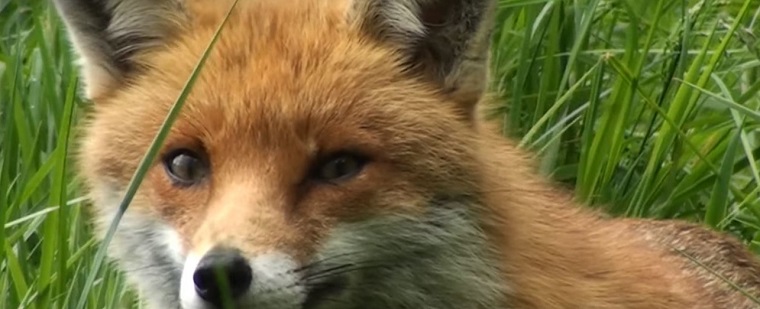-
info@aaanimalcontrol.com
Call us for help in your town
Humane Wildlife Education
How dangerous are foxes to humans?
Need fox removal in your hometown? We service over 500 USA locations! Click here to hire us in your town and check prices - updated for year 2020.
Foxes look very cute on Instagram and Facebook, scampering around and bouncing around on trampolines, and sometimes, they are just that — very cute animals. The same can be said for all manner of wild critters. When they want to be adorable, they can be, but they aren’t like that all the time.
That’s definitely the case with foxes.

In the UK, in 2013, there was a well reported case of a fox managing to get into the bedroom of a baby in London, biting the four-week old, requiring urgent medical attention. This is a very rare occurrence. Foxes are usually rather shy creatures, and ones that would much prefer to scamper away, than stay and fight, especially against a human.
However, it must be stressed that foxes are becoming more tamed and comfortable with human interaction. People are feeding the wild animals, and the animals have learned that humans usually mean food or a bit of fussing. When they want to, they turn on the cunning charm, luring us into a false sense of security. When the chain of food stops though, things often take a very different turn. This is when the animal gets annoyed, wanting and demanding more food. If they don’t get want they want, they can snap and bite, because that’s what WILD animals do. These creatures are not tame.
Foxes have learned to trust humans, but are usually very wary around them. This can work in your favor when it comes to trying to scare them off, but if you have been feeding them, even accidentally, your scare tactics might not work. In fact, it might make them angry or defensive, and these are the times they will attack.
Alongside the real threats of physical attacks on humans, you must bear in mind that these animals can bring some very nasty diseases to the mix. Some of these will just affect other animals, and may include your household pets, but some of them can even effect humans, specifically young children and the elderly, or those with health concerns already.
Ticks and fleas will hang out on many foxes, and it takes just one flea to jump from the fox to your clothing for it to then become an infestation in your home. If the fox comes in contact with your cat or dog, the same could also happen and this can cause distress and irritation for your pet.
The most common and prolific disease that seems to be carried by the cunning fox is Toxocariasis, which can cause roundworm, passed on via feces, which then spreads the roundworm eggs into soil and water sources.
The chances of a fox passing mange on is quite slight, but is still a very big concern. It is generally considered that actual, physical contact is necessary for this to pass along, but this is still something you will need to seriously think about when handling a fox, especially without some sort of protection.
Of course, one of the biggest concerns with wild critters is always going to be rabies, and this is definitely a concern with the fox. There are a few rabies-free countries around the world, but the USA is not one of them. Passed on via biting and scratches, even the dead carcass of the fox can be a carrier and transmitter for the disease, which makes this creature even dangerous after it has passed away.
Read aboutHow to get rid of fox
For more information, you may want to click on one of these guides that I wrote:
How To Guide: Who should I hire? - What questions to ask, to look for, who NOT to hire.
How To Guide: do it yourself! - Advice on saving money by doing wildlife removal yourself.
Guide: How much does wildlife removal cost? - Analysis of wildlife control prices.
Animals in the attic - read about the common species.
Noises in the attic - how to identify critters by their sounds.


















